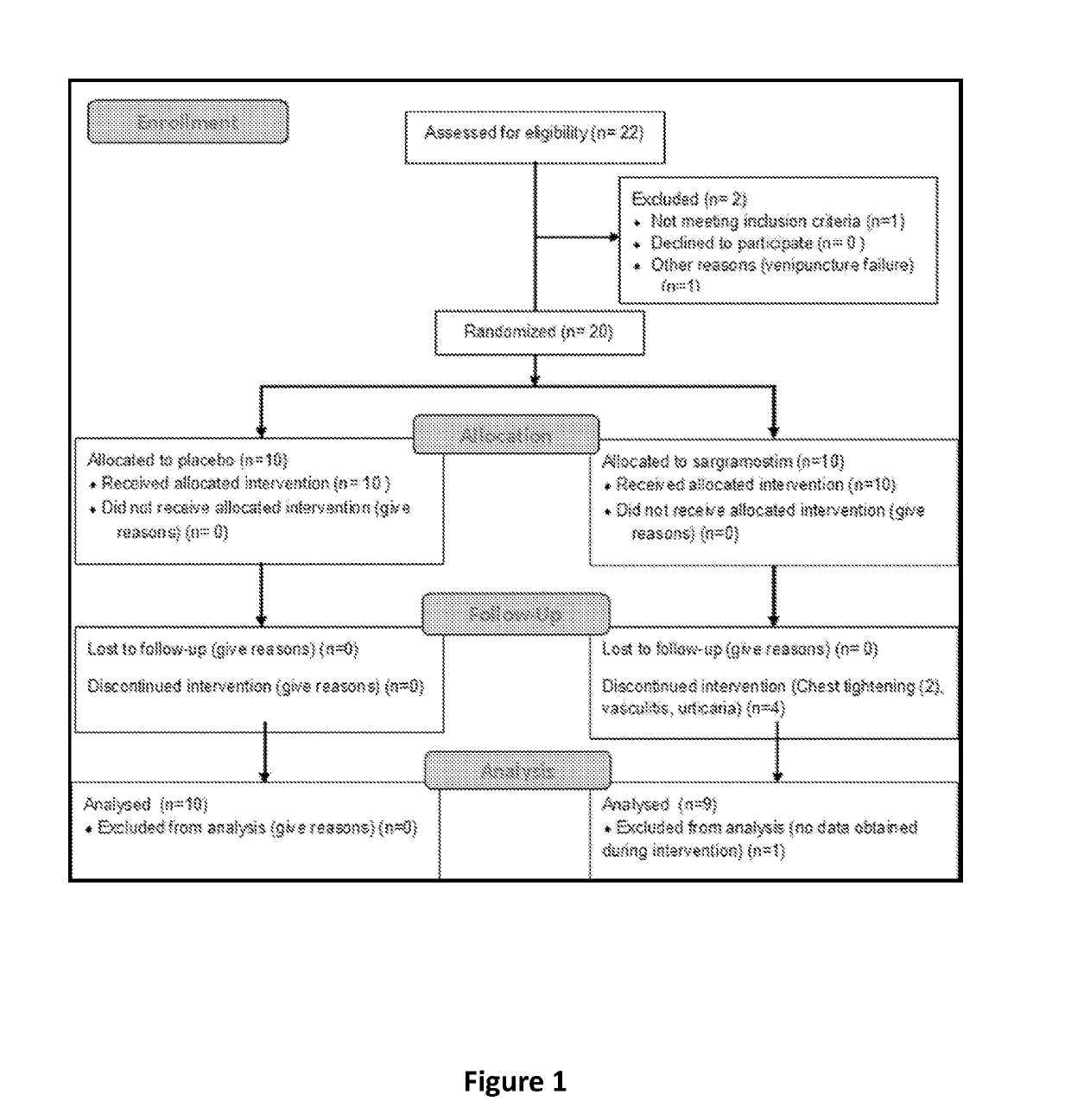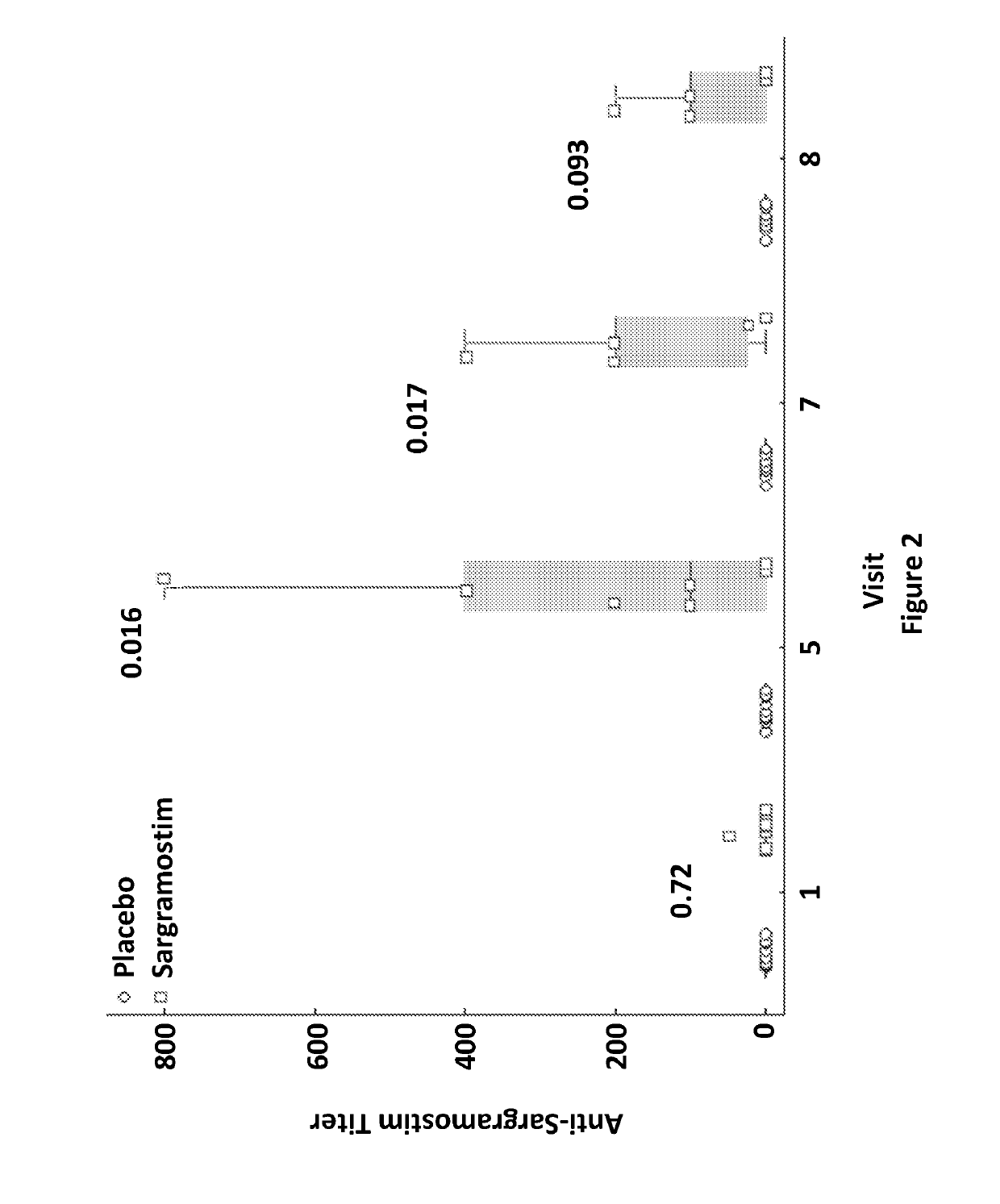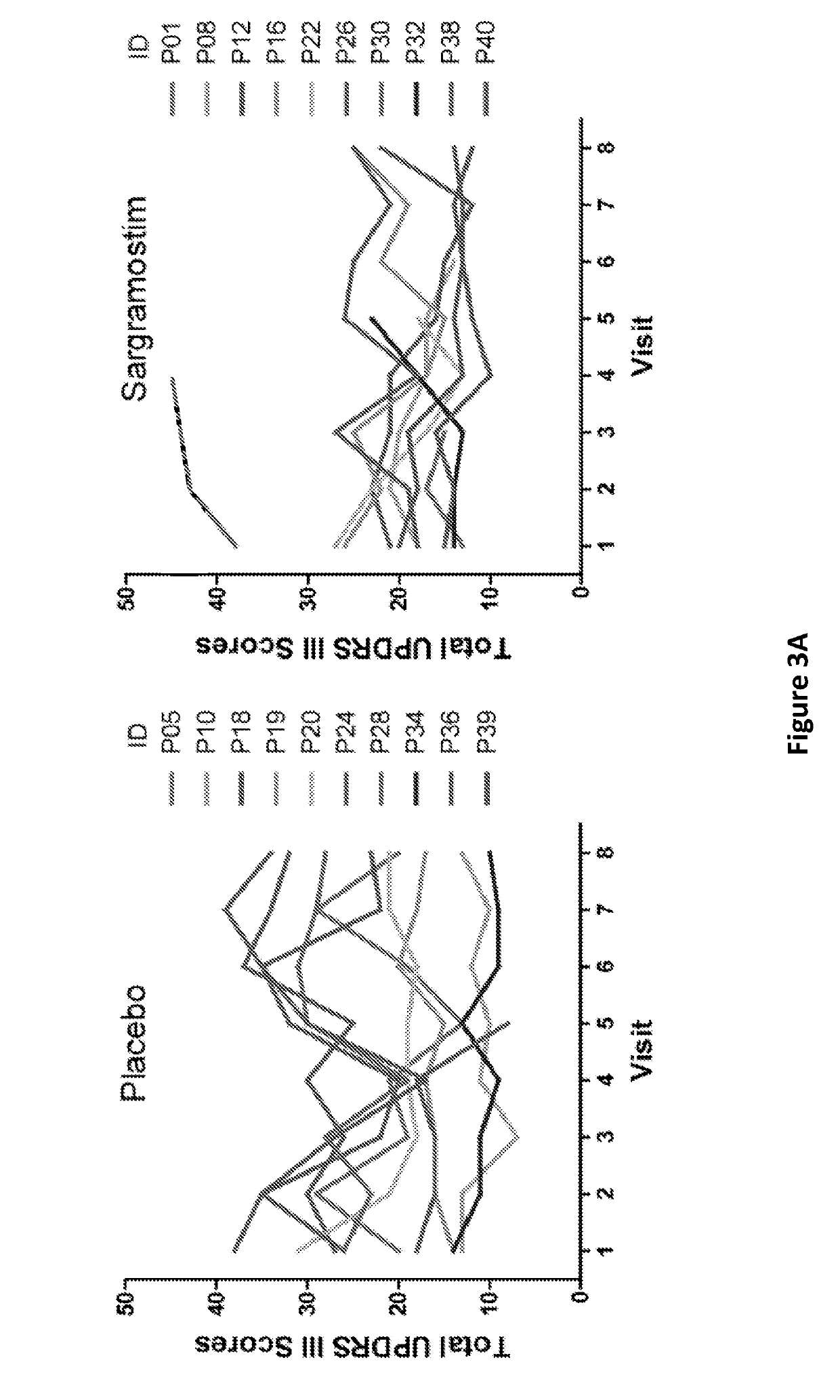Biomarkers for monitoring immune transformation
a biomarker and immune transformation technology, applied in the field of parkinson disease, can solve the problems of ineffective therapy, inability to stop the root cause of neurodegeneration, and insufficient therapy, and achieve the effect of increasing beta erd activity and no significant effect on erd activity
- Summary
- Abstract
- Description
- Claims
- Application Information
AI Technical Summary
Benefits of technology
Problems solved by technology
Method used
Image
Examples
example
Methods
Study Design
[0050]Twenty PD patients were recruited from the metropolitan area for an intention to treat design. Inclusion criteria were 35 to 85 years of age at onset with symptoms that included asymmetric bradykinesia and resting tremor or muscle rigidity persisting for ≥3 years, and ≤ stage 4 by Hoehn and Yahr disease scale (Goetz et al. (2004) Mov. Disord., 19(9):1020-8). Seventeen age-matched non-parkinsonian subjects served as controls. Exclusion criteria included multiple system atrophy, corticobasal degeneration, unilateral Parkinsonism lasting of >3 years, prior head injury, stroke, brain surgery, a PD family history of >1 blood relative with the disease, mental illness, cognitive impairment, and autoimmune, systemic inflammatory, or hematologic disorders. Patients who received lithium, neuroleptics, immune modulatory treatment within 90 days of study onset, or had allergies to benzyl alcohol, colony stimulating factors, or yeast-derived products were not enrolled. F...
PUM
| Property | Measurement | Unit |
|---|---|---|
| Volume | aaaaa | aaaaa |
| Volume | aaaaa | aaaaa |
| Volume | aaaaa | aaaaa |
Abstract
Description
Claims
Application Information
 Login to View More
Login to View More - R&D
- Intellectual Property
- Life Sciences
- Materials
- Tech Scout
- Unparalleled Data Quality
- Higher Quality Content
- 60% Fewer Hallucinations
Browse by: Latest US Patents, China's latest patents, Technical Efficacy Thesaurus, Application Domain, Technology Topic, Popular Technical Reports.
© 2025 PatSnap. All rights reserved.Legal|Privacy policy|Modern Slavery Act Transparency Statement|Sitemap|About US| Contact US: help@patsnap.com



